 |
Welcome To Evlithium Best Store For Lithium Iron Phosphate (LiFePO4) Battery |
 |
Individual pricing for large scale projects and wholesale demands is available.
Mobile/WhatsApp/Wechat: +86 156 0637 1958
Email: info@evlithium.com
Nominal Voltage:3.2V
Nominal capacity:280Ah
Working voltage:2.5V~3.65V
AC impedance resistance(1khz):≤0.25mΩ
Max. pulse charge / discharge current: 2C (30S)
Dimension: 207(H)*72(T)*173.7(W)mm
Weight: 5.42±0.3kg
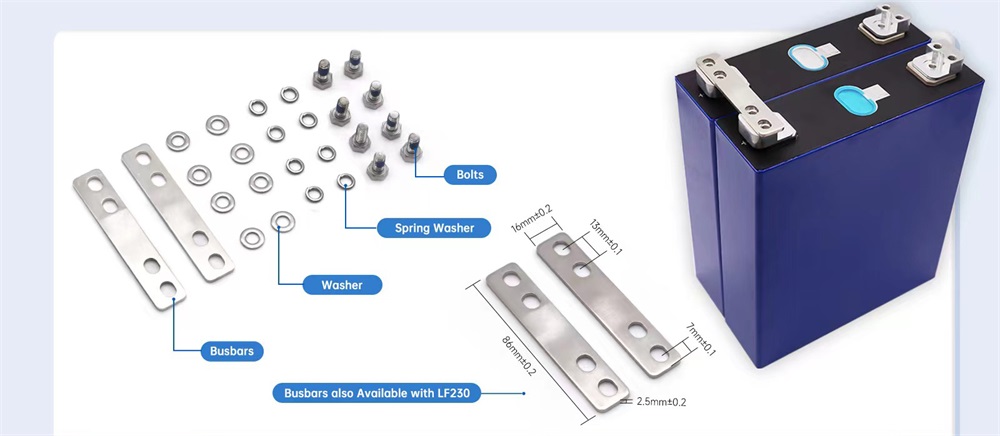
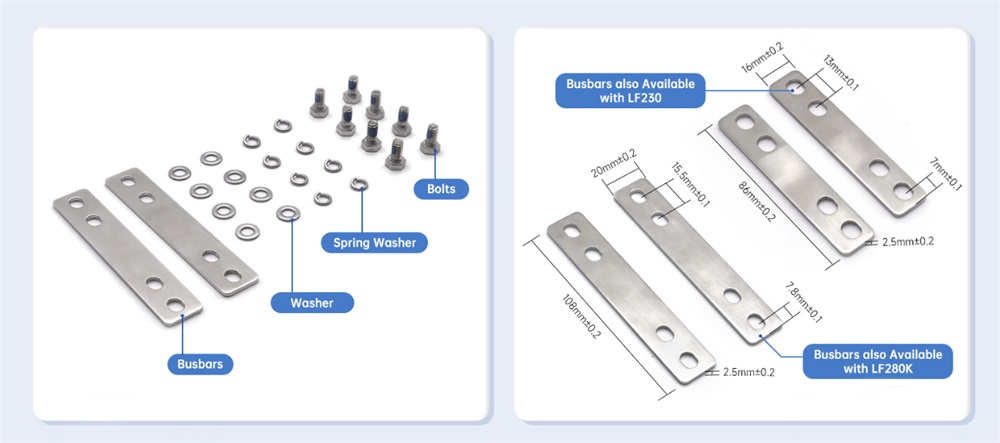
1.Dimension(Height and Tabs Distance)
Height:
LF280: 204.8*72*173.6mm VS LF280K: 207*72*173.6mm
Tabs distance:
LF280: 90±0.3mm, LF280K: 123.0±0.3mm
2.Cycle Life
LF280: 3500cycles, LF280K: 6000cycles
(Under the 300kgf clamp, after standard charged and 30mins rest, discharge to 2.5V cut-off with the current of 0.5CA at (25±2)℃, and then start the next cycle. end with the capacity decreasing to 80% of the initial capacity. The number of cycles is defined as the cycle life of the battery)
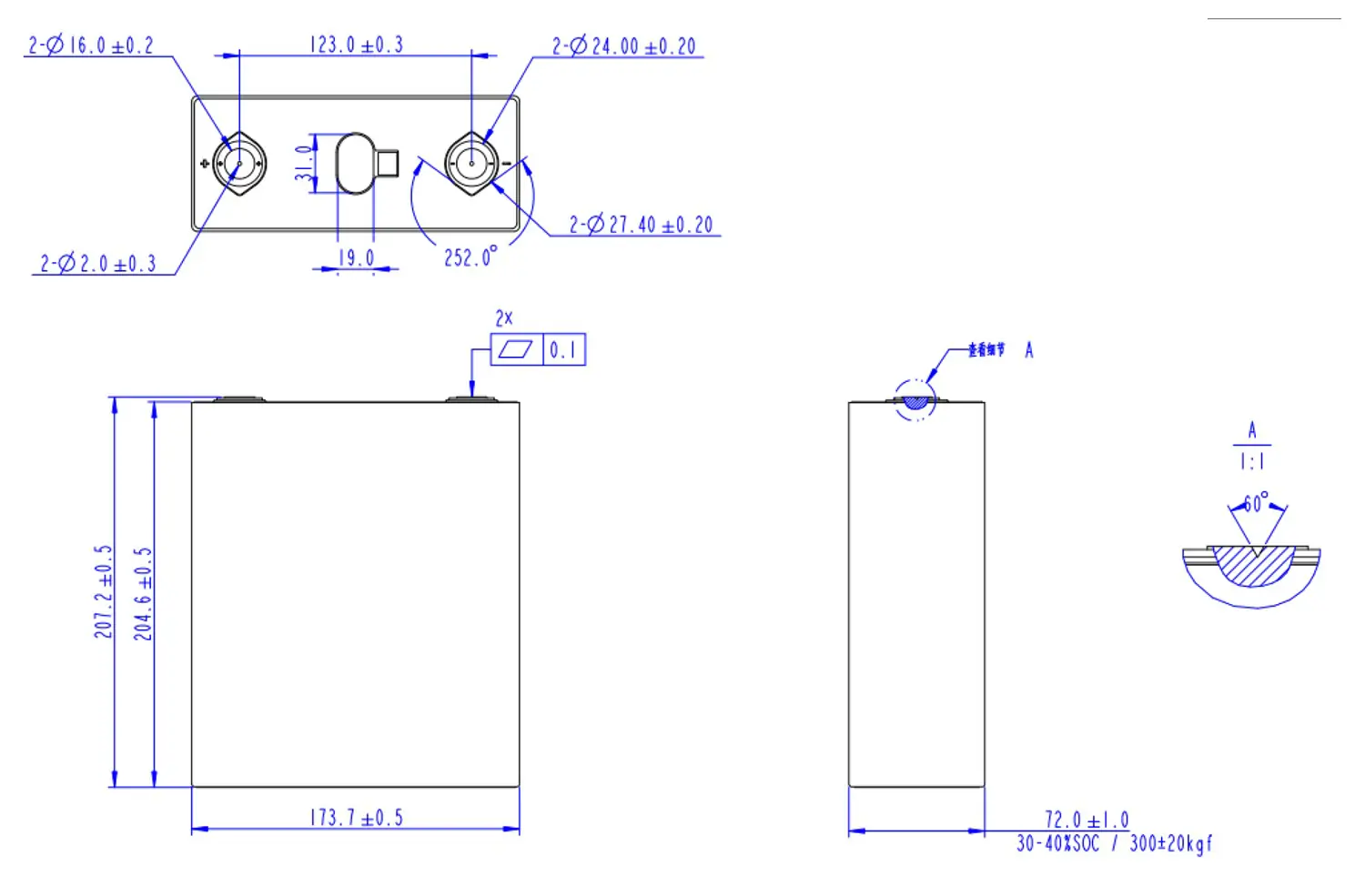
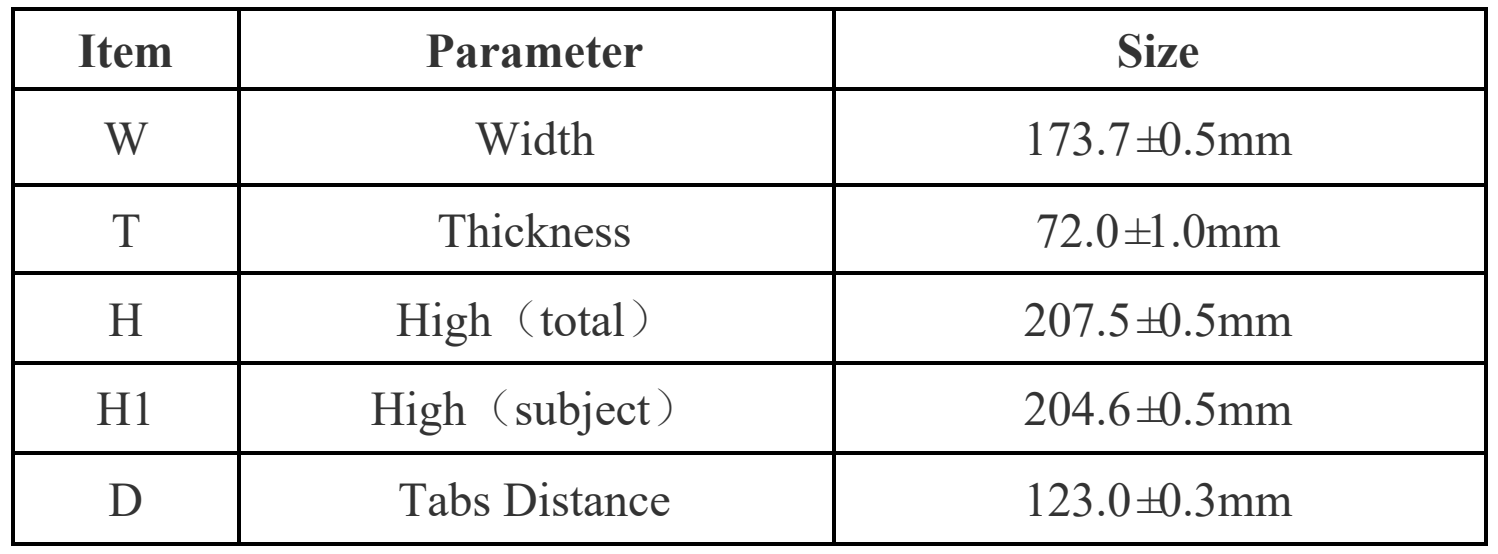
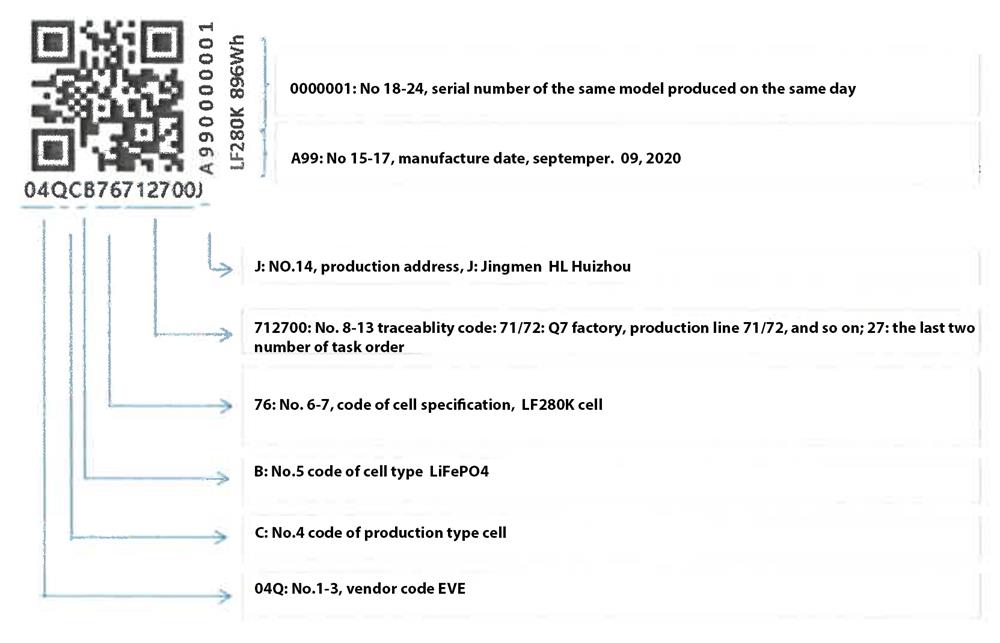
|
Item |
Parameter |
|
Nominal Capacity |
280ah |
|
Typical Voltage |
3.2V |
|
AC Impedance Resistance (1KHz) |
≤0.25mΩ |
|
Standard charge / discharge Current |
0.5C |
|
Cut off voltage of charge / discharge |
3.65V / 2.5V |
|
Max. continuous charge / discharge current |
1C |
|
Max. pulse charge / discharge current(30S) |
2C |
|
Recommended scope of SOC |
10%~90% |
|
Charging temperature |
0~55℃ |
|
Discharging temperature |
-20~55℃ |
|
Storage temperature Short-term (within 1 month) |
-20~45℃ |
|
Storage temperature Long-term (within 1 year) |
0~35℃ |
|
Storage humidity range |
<90% |
|
Self-Discharge rate per month |
≤3%/month |
|
Dimension |
207*72*173.7mm |
|
Weight |
5.42±0.3kg |
|
Cycle life at 25℃ |
≥6000 cycles @0.5C |
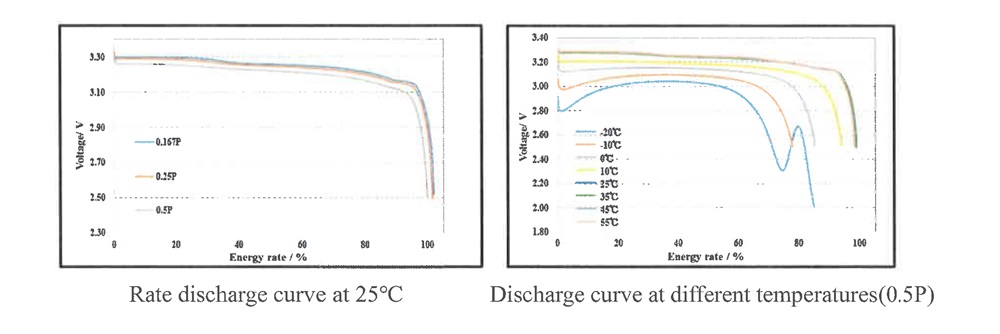
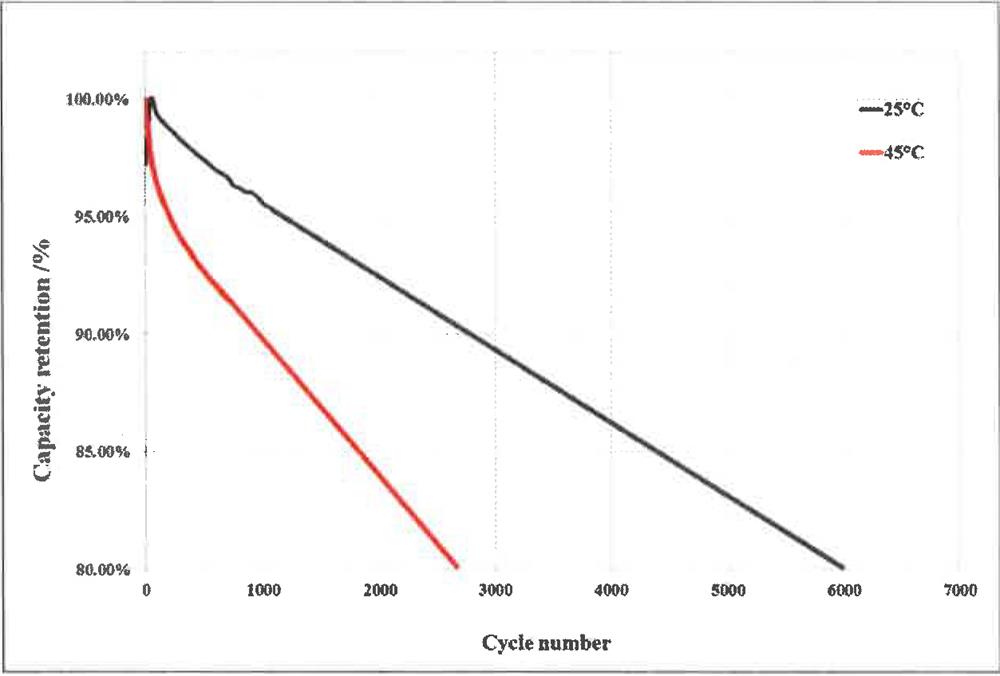
Cycle curve(charge/discharge: 0.5C/0.5C, 3.65V-2.5V)
Attentions
For safety usage, please be careful on below:
Warning!
1. Do not immerse the battery in water and keep it dry when not using;
2. Do not strike, throw or subject the battery near a fire or in extremely hot conditions;
3. Charge with specified charge according to charging requirement;
4. Do not reverse the positive (+) and negative (-) terminals;
5. Do not put the battery into a fire or apply direct heat to it;
6. Do not short-circuit the battery by connecting wires or other metal objects to the positive (+) and negative (-) terminals;
7. Do not ship or store the battery metal objects, such as necklaces, hairpins, etc;
8. Do not knock, throw, tread, bend, etc;
9. Do not directly solder the battery terminals;
10. Do not pierce the battery casing with a nail or other sharp object.
All Rights reserved © 2025 Evlithium Limited